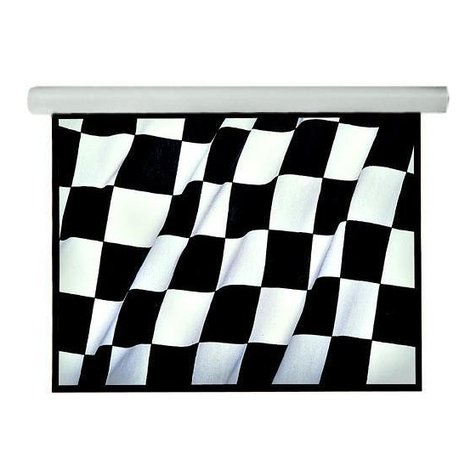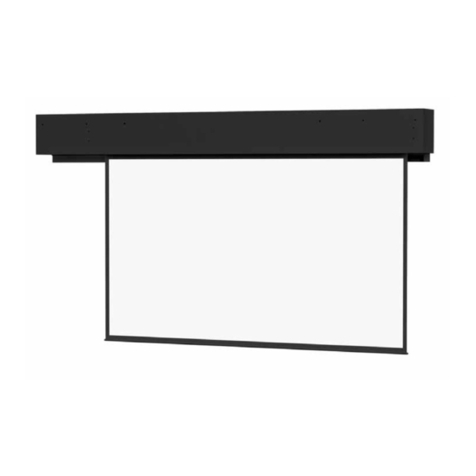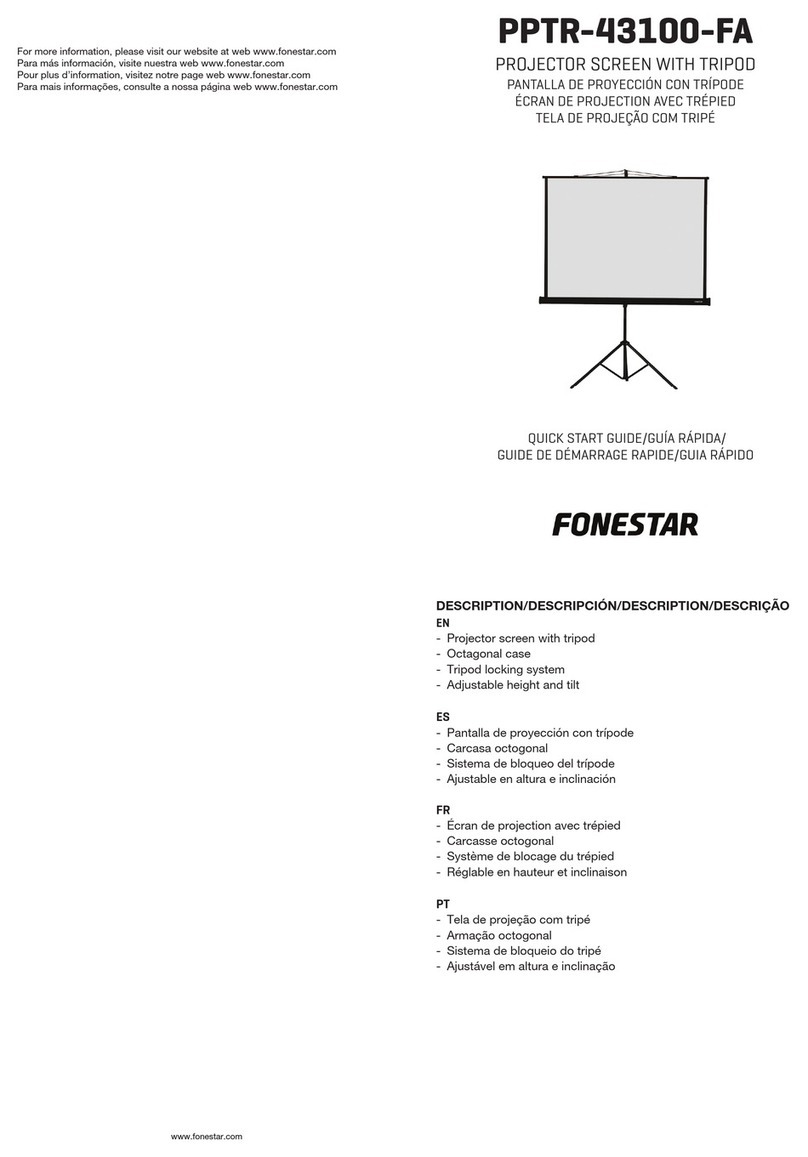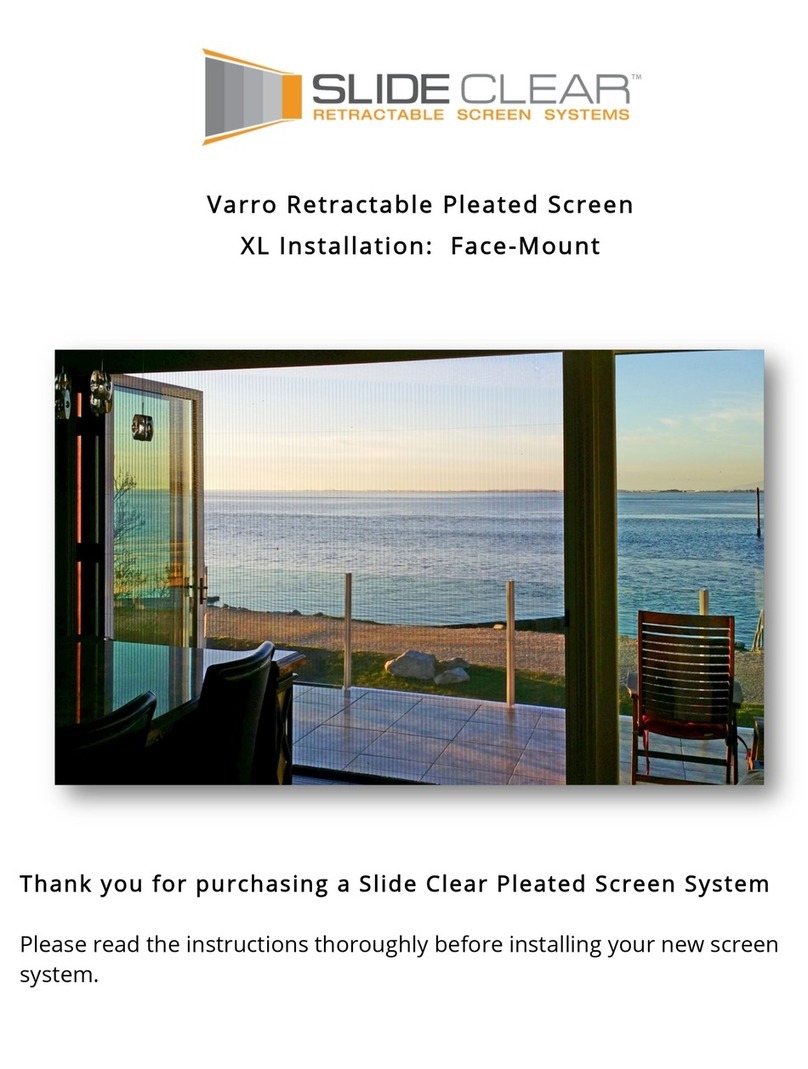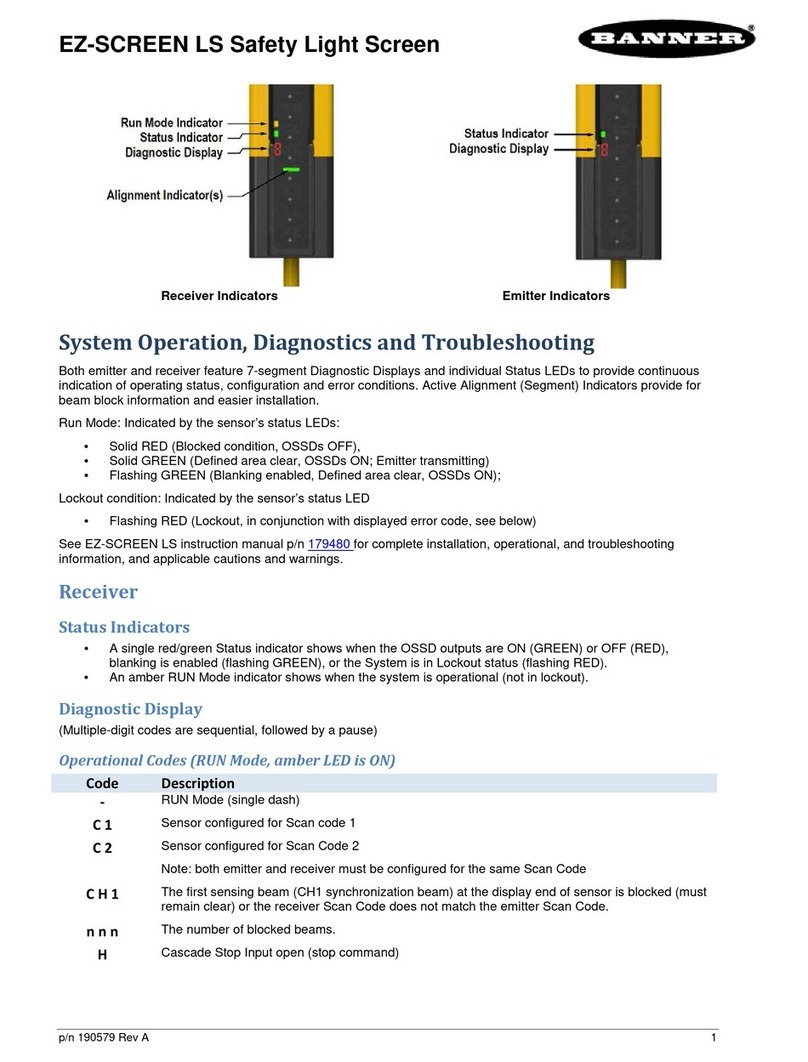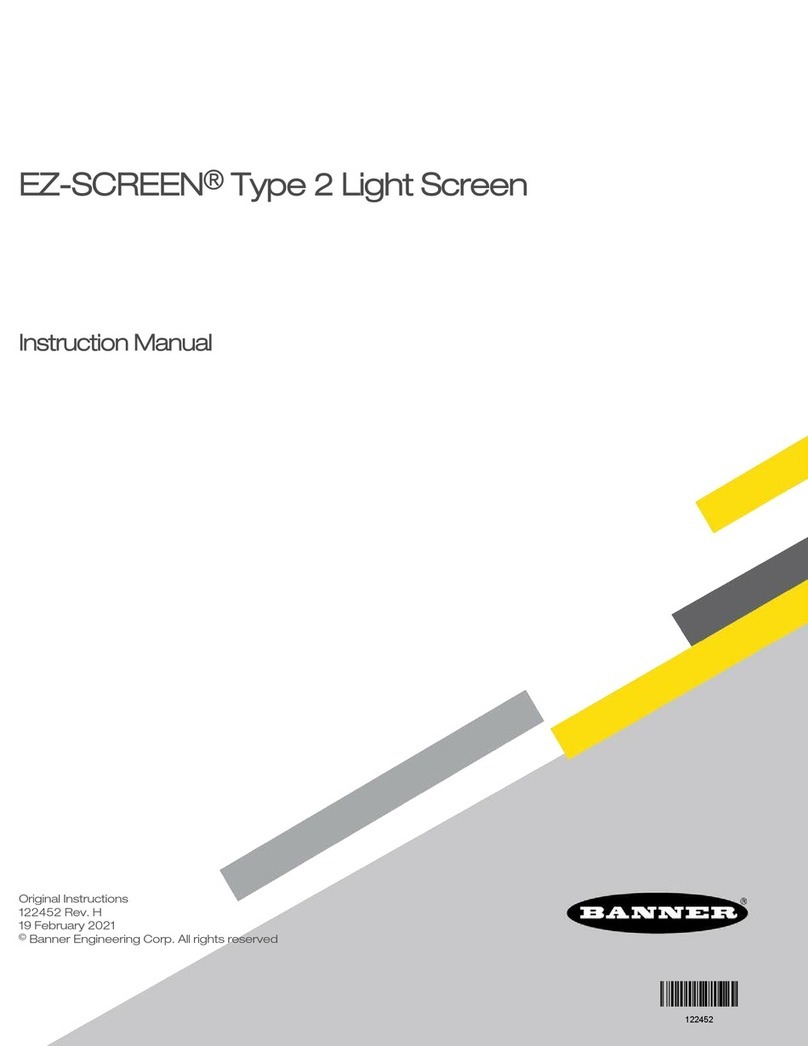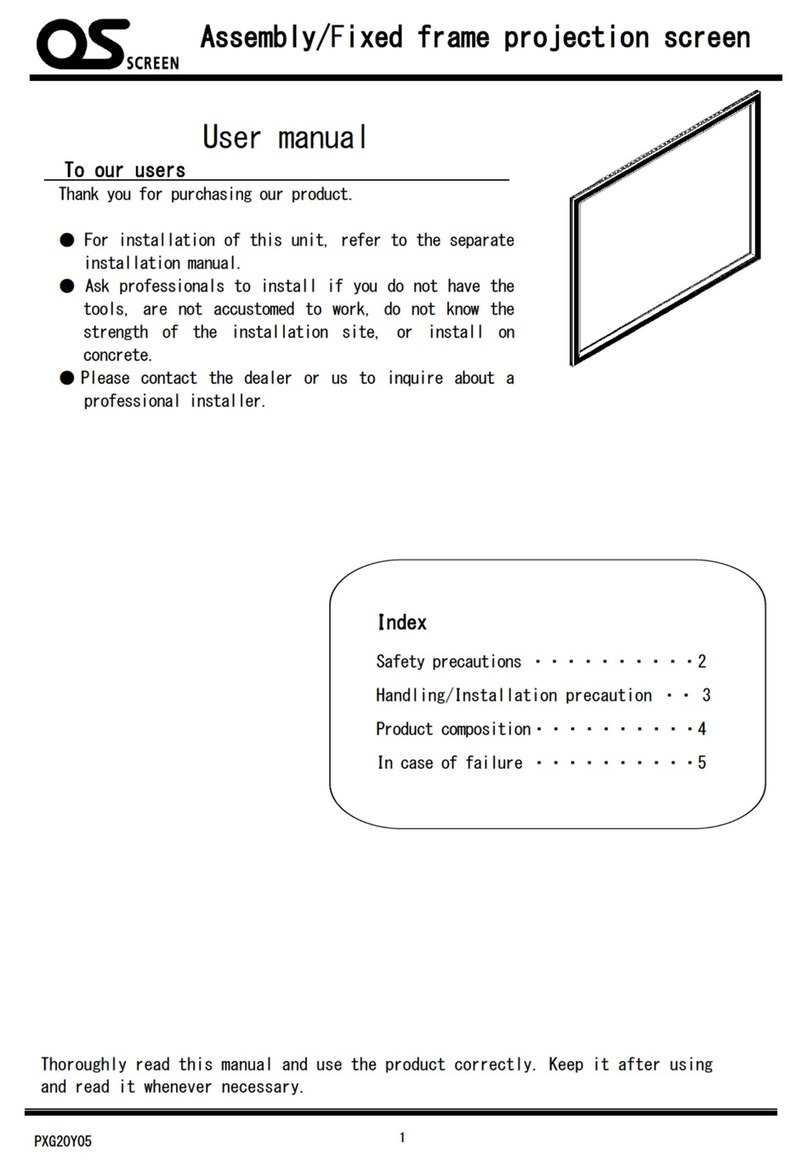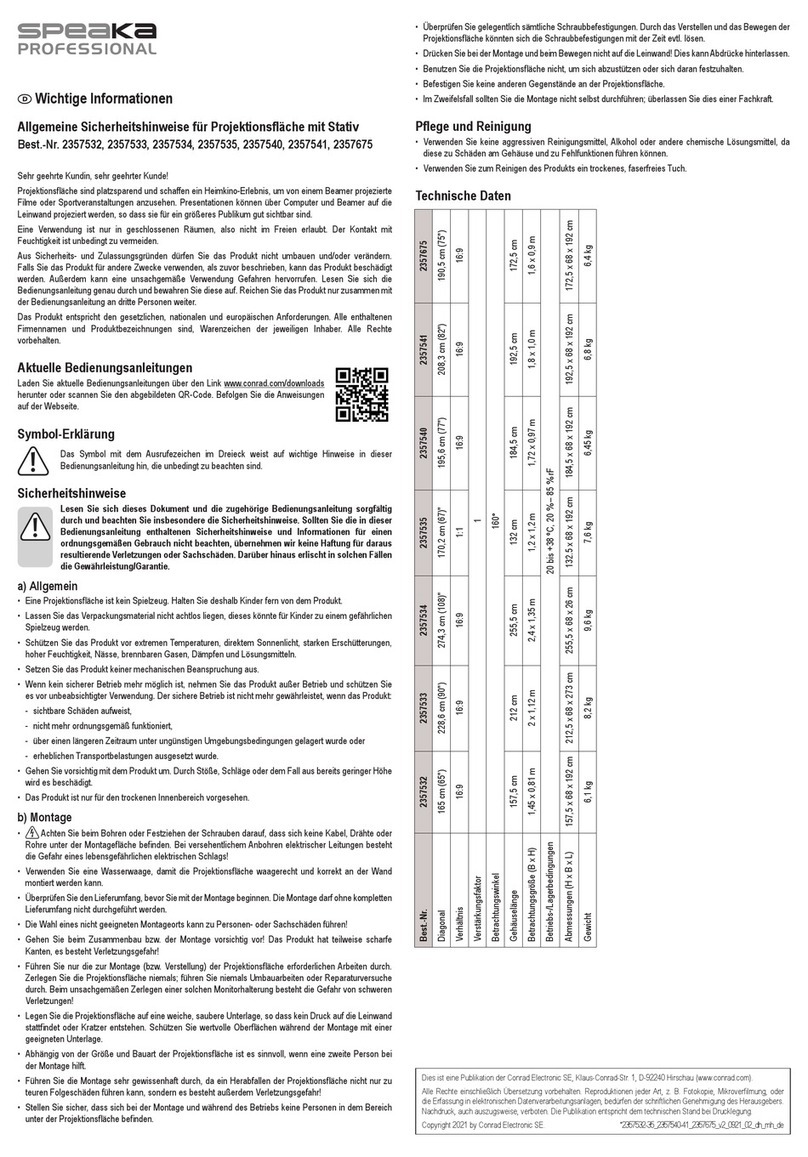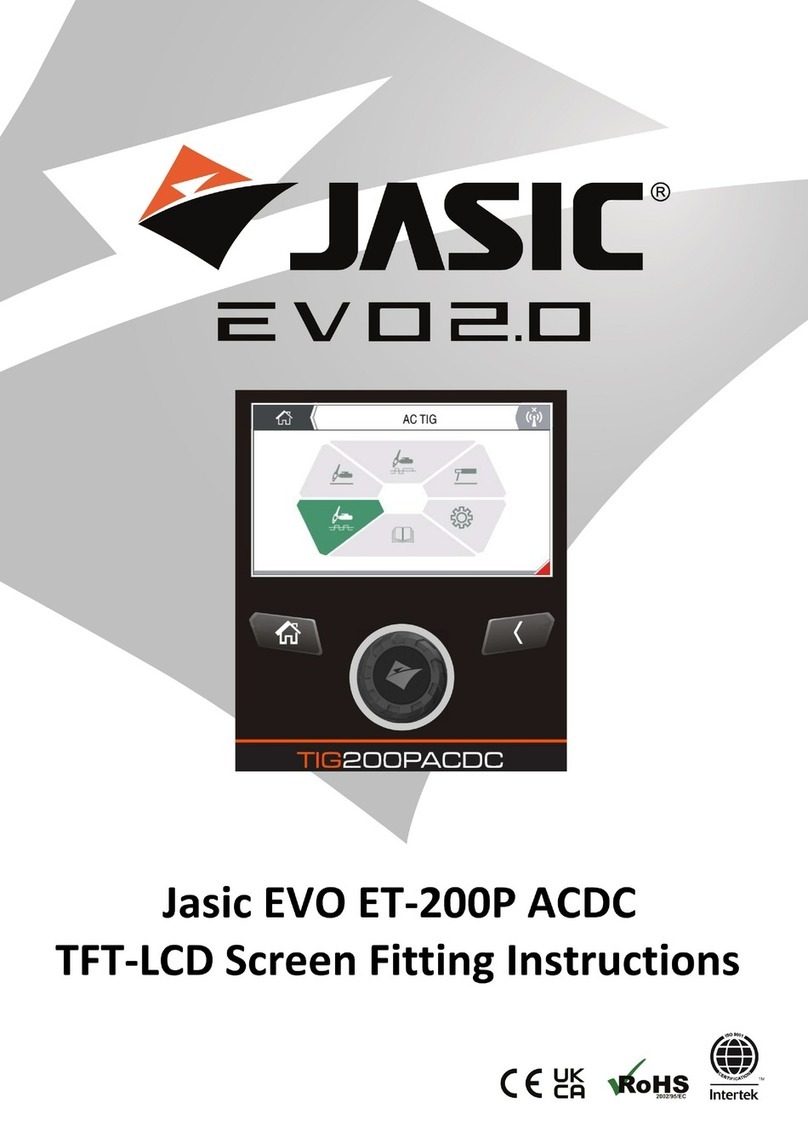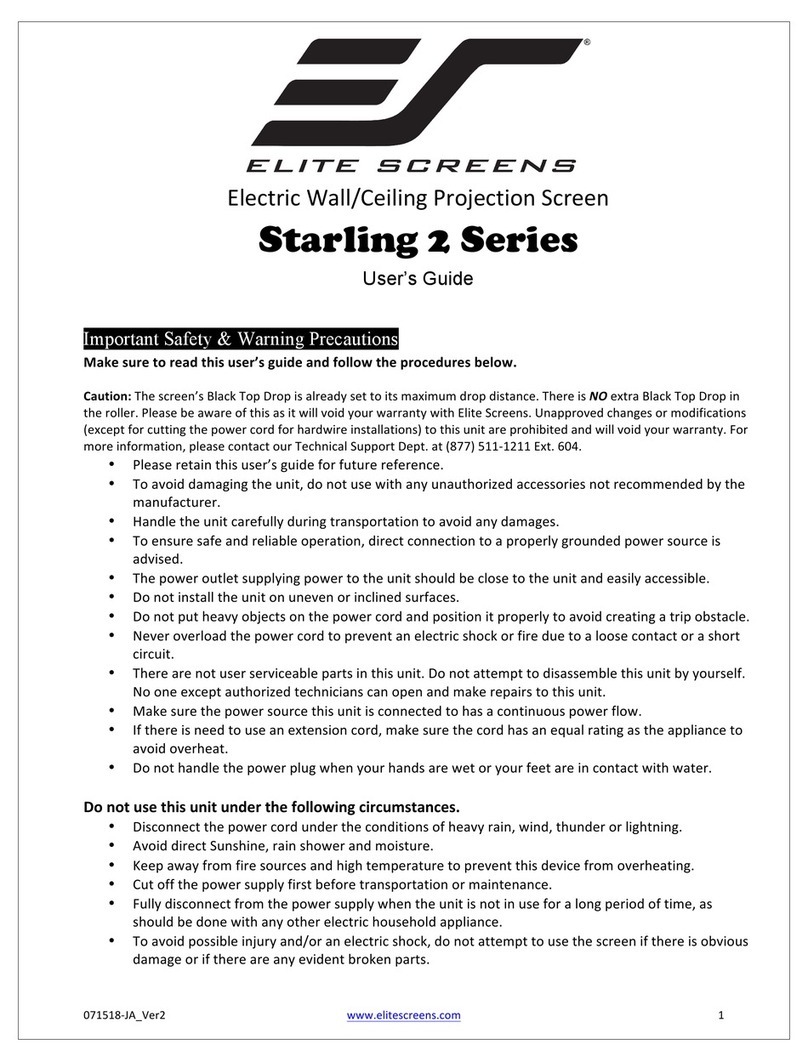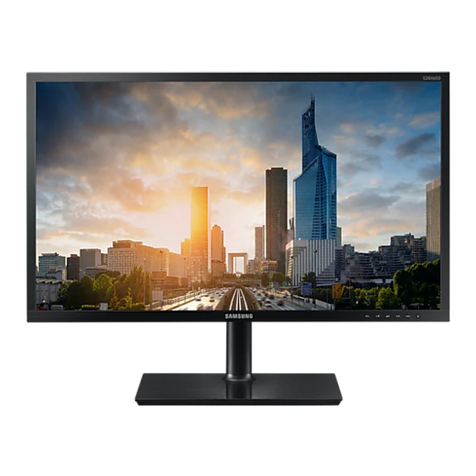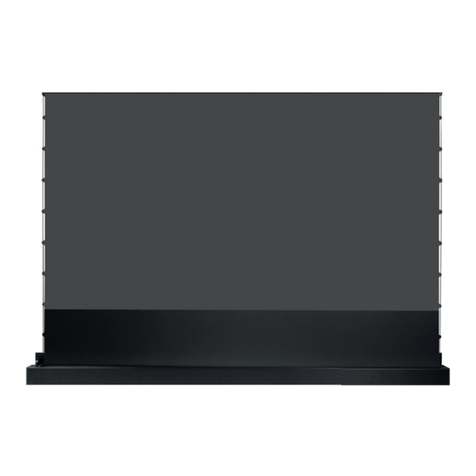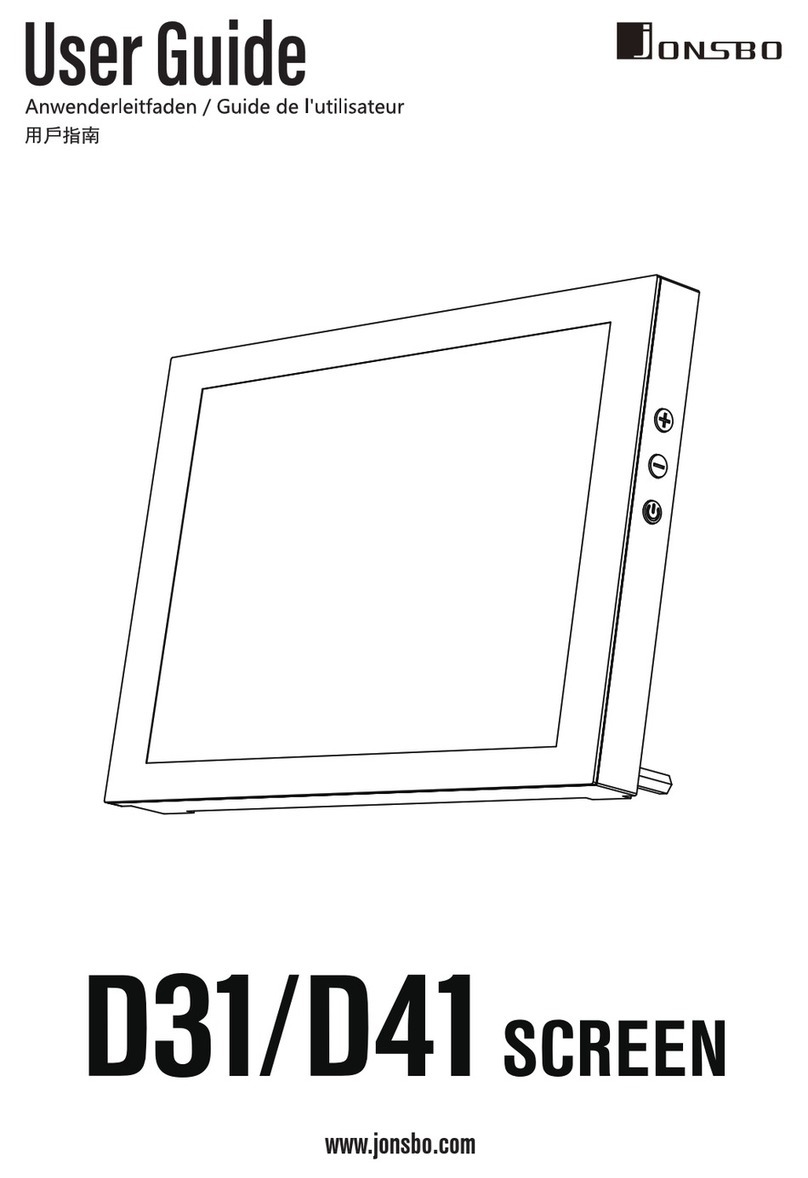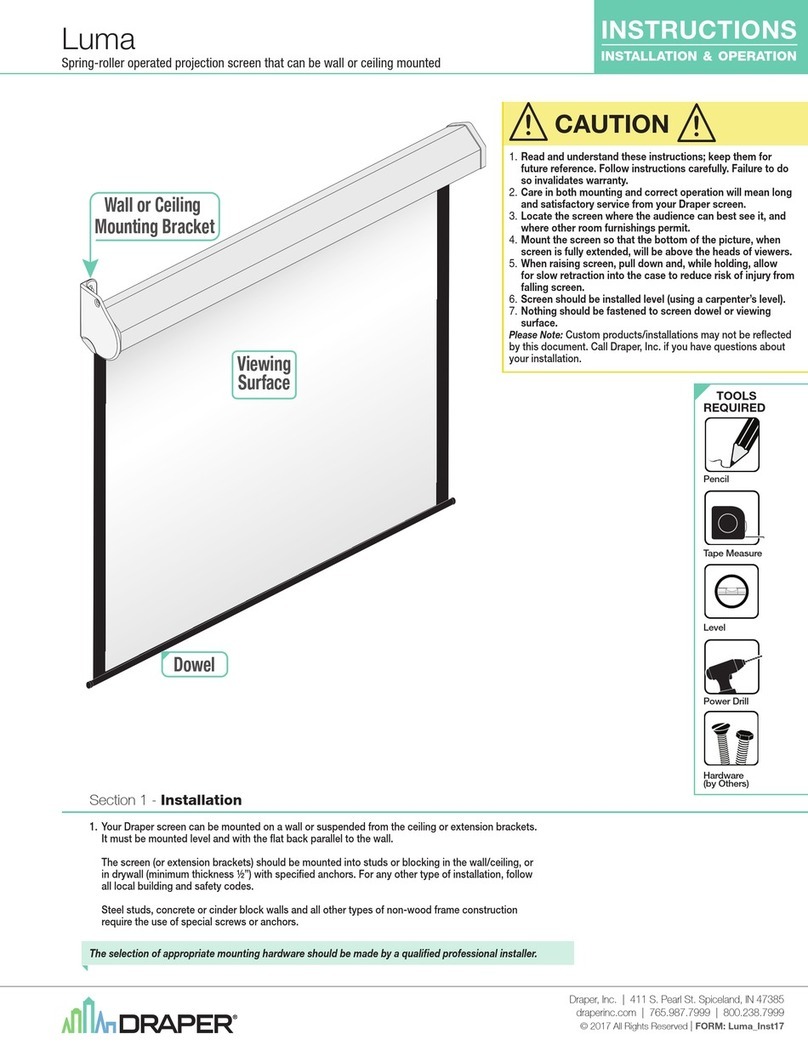
Banner Engineering Corp., 9714 T
enth A
ve. No., Minneapolis, MN 55441 •
Phone: 763.544.3164 • www
.bannerengineering.com • Email:
[email protected]EZ-SCREEN
®
LPM Safety Light Screen Semi-Annual Checkout
11. Apply power to the guarded machine and verify that the
machine does not start up. Insert the test piece into the defined
area and verify that it is not possible for the guarded machine to be
put into motion while a beam is blocked.
12. Initiate machine motion of the guarded machine and, while
it is moving, insert the supplied test piece into the defined area.
Do not attempt to insert the test piece into the dangerous parts
of the machine. Upon blocking any beam, the dangerous parts of
the machine should come to a stop with no apparent delay. Upon
removal of the test piece from the defined area, verify that the
machine does not automatically restart, and that the initiation
devices must be engaged to restart the machine.
13. Remove electrical power to the EZ-SCREEN LPM. All OSSD
outputs should turn OFF, and should not be capable of turning ON
until power is re-applied and, if in Latch Output mode, a manual reset
is performed (Trip Output mode requires no manual reset).
14. Test the machine stopping response time, using an instrument
designed for that purpose, to verify that it is the same or less
than the overall system response time specified by the machine
manufacturer. (Banner can recommend a suitable instrument)
15. If any decrease in machine braking ability has occurred, make
the necessary clutch/brake repairs, readjust separation (safety)
distance (“Ds” or “S”) appropriately, record the new distance
calculation on the appropriate Daily Checkout Procedure card and/or
in the manual, and re-perform the Daily Checkout procedure.
16. Examine and test the machine primary control elements
(MPCEs) and any intermediary controls (such as interface modules)
to verify that they are functioning correctly and are not in need of
maintenance or replacement.
17. Inspect the guarded machine to verify that no other mechanical
or structural problems could prevent the machine from stopping
or assuming an otherwise safe condition when signaled to do so by
the EZ-SCREEN LPM.
18. Examine and inspect the machine controls and connections
to the EZ-SCREEN LPM to verify that no modifications have been
made which adversely affect the System.
19. If the Muting feature is used:
Do not expose any individual to hazard while attempting to initiate a
mute cycle.
19a Verify that the mute devices are intact and operating properly.
19b Initiate a normal mute cycle. Observe the receiver Diagnostic
Display (see step 8). Verify:
- Status indicator is Green
- MD1 and MD2 indicators are Yellow
- Display flashes a “-“ (Trip) or “L” (Latch)
19c If used, verify that the external mute indicator is ON.
19d Interrupt the safety light screen with the test piece selected in
step 10. Verify:
- Status indicator is Green
- Zone indicator(s) are Red identifying location of interruption
- Display flashes no. of blocked beams or CH1 if beam 1 is blocked
19e Clear the safety light screen (before the Mute Timer expires). Verify
that the Zone indicator(s) are all Green, the Display flashes a “-“
(Trip) or “L” (Latch) and the external mute indicator (if used) is ON.
19f Clear (or deactivate) the mute devices and verify:
- External mute indicator (if used) is OFF
- Status indicator is Green
- MD1 and MD2 indicators are OFF
- Display shows a solid “-“ (Trip) or “L” (Latch)
19g Verify that it is not possible for an individual to trigger the mute
devices (block both photoelectric beams or actuate both switches)
to initiate a mute and then pass through the defined area without
being detected and a subsequent stop command being issued to
the machine. If Muting option 7 is selected, verify that a mute cycle
cannot be initiated from the non-hazardous side of the installation.
20. If the Override or Bypass feature is used:
20a Ensure that the positioning of the OR1 and OR2 switches allows the
operator full view of the hazardous area and the area being guarded
by the safety light screen. Verify that the location is not within reach
from inside the safeguarded space.
20b With muting de-activated, interrupt the safety light screen with the
test piece. If Mute Dependent Override is used, also block one
mute device, and then verify:
- The external mute indicator, if used, is flashing
- Status indicator is Red
- MD1 or MD2 indicator (whichever is blocked) is Yellow
- Display flashes no. of blocked beams or CH1 if beam 1 is blocked
If the Bypass feature is used:
- The external mute indicator, if used, is OFF
- Status indicator is Red
- Zone indicator(s) are Red identifying location the interruption
20c Initiate an override/bypass by activating the OR1 and OR2 switches
within 3 seconds of each other.
20d While the light screen is interrupted, verify:
- External mute indicator, if used, is ON
- Status indicator is Green
- Display flashes number of blocked beams
20e Verify that the override drops out after 60 seconds or the bypass
drops out after 5 minutes. To initiate another override or bypass,
return switches to the original condition, wait 3 seconds, and then
activate both Override switches again within 3 seconds of each
other.
21. If all checks cannot be verified, shut machine down and do not use
until the problem(s) has been corrected. Refer to user’s manual,
Section 6.
Do not continue operation until the entire checkout procedure is complete
and all problems are corrected.
WARNING . . . Before Applying Power to the Machine
Verify that the guarded area is clear of personnel and unwanted
materials (such as tools) before applying power to the guarded
machine.
Failure to do so could result in serious bodily injury or death.
WARNING . . . Do Not Use Machine Until System Is
Working Properly
If all of these checks cannot be verified, do not attempt to use the
EZ-SCREEN LPM/guarded machine until the defect or problem has
been corrected (see Section 6 of the manual). Attempts to use the
guarded machine under such conditions could result in serious
bodily injury or death.
